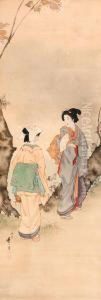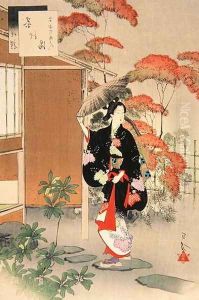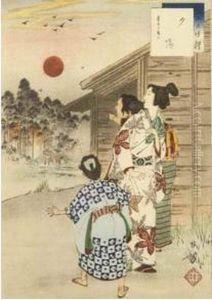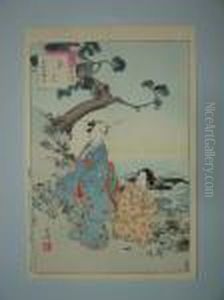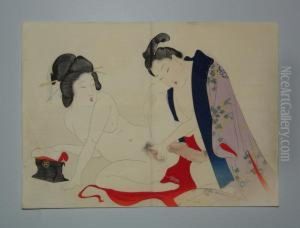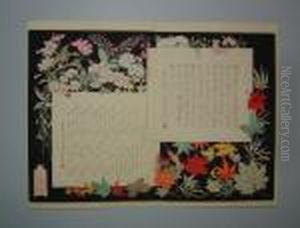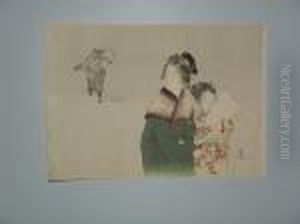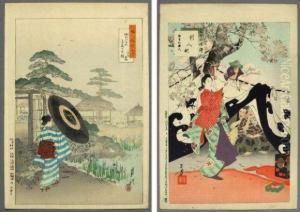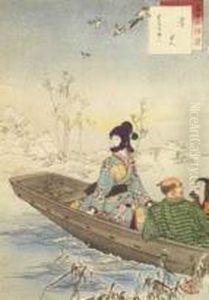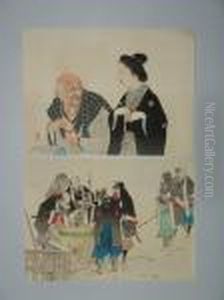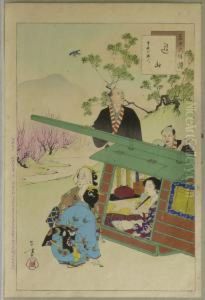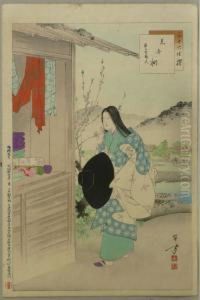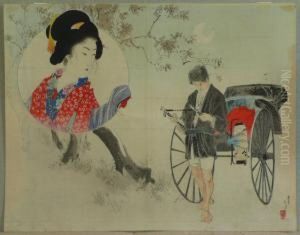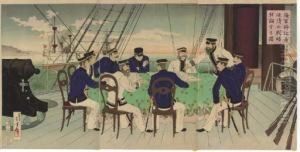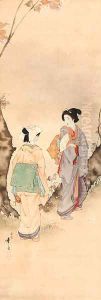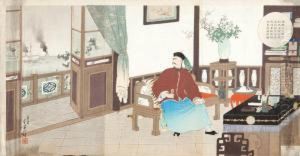Mizuno Toshikata Paintings
Mizuno Toshikata was a Japanese artist who lived during the Meiji period, a time of significant transformation and westernization in Japan. Born in Tokyo, Toshikata was initially trained in the art of Japanese woodblock printing, a traditional method that had been popular for centuries in Japan. He was a student of Tsukioka Yoshitoshi, a master in the Ukiyo-e style, which focused on depicting the 'floating world' of entertainment, leisure, and landscapes.
As Japan opened up to Western influences, Toshikata, like many artists of his time, was exposed to Western art techniques and styles. However, rather than abandoning the traditional Japanese aesthetic, he sought to integrate these new influences into his work. This resulted in a unique blend of Japanese subject matter with Western painting techniques, contributing to the development of the shin-hanga movement, which sought to revitalize traditional ukiyo-e art by incorporating Western elements.
Toshikata was not only a prolific printmaker but also an accomplished painter and illustrator. Throughout his career, he contributed to newspapers and magazines, illustrating novels and historical tales. His works often depicted scenes from Japanese history and folklore, showcasing his interest in Japan's past and its cultural heritage. He was also known for his bijin-ga (pictures of beautiful women), which reflected the changing roles and perceptions of women during the Meiji era.
Despite his contributions to Japanese art and the shin-hanga movement, Toshikata's career was cut short by his untimely death in 1908. His works, however, continue to be celebrated for their beauty and historical significance. Toshikata's legacy is evident in the continued appreciation of shin-hanga prints and the ongoing interest in Meiji-period art, serving as a bridge between the traditional and modern in Japanese art.
